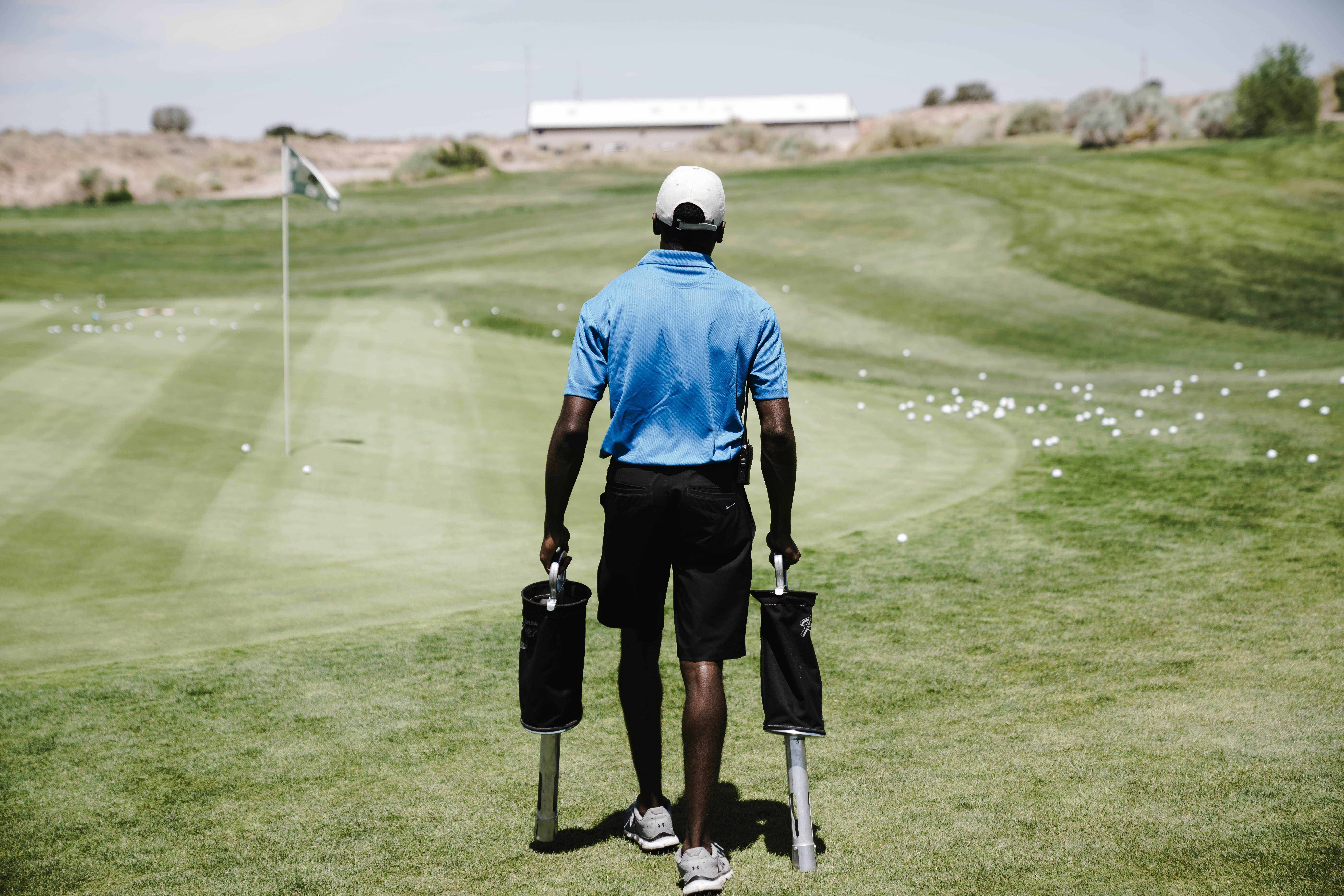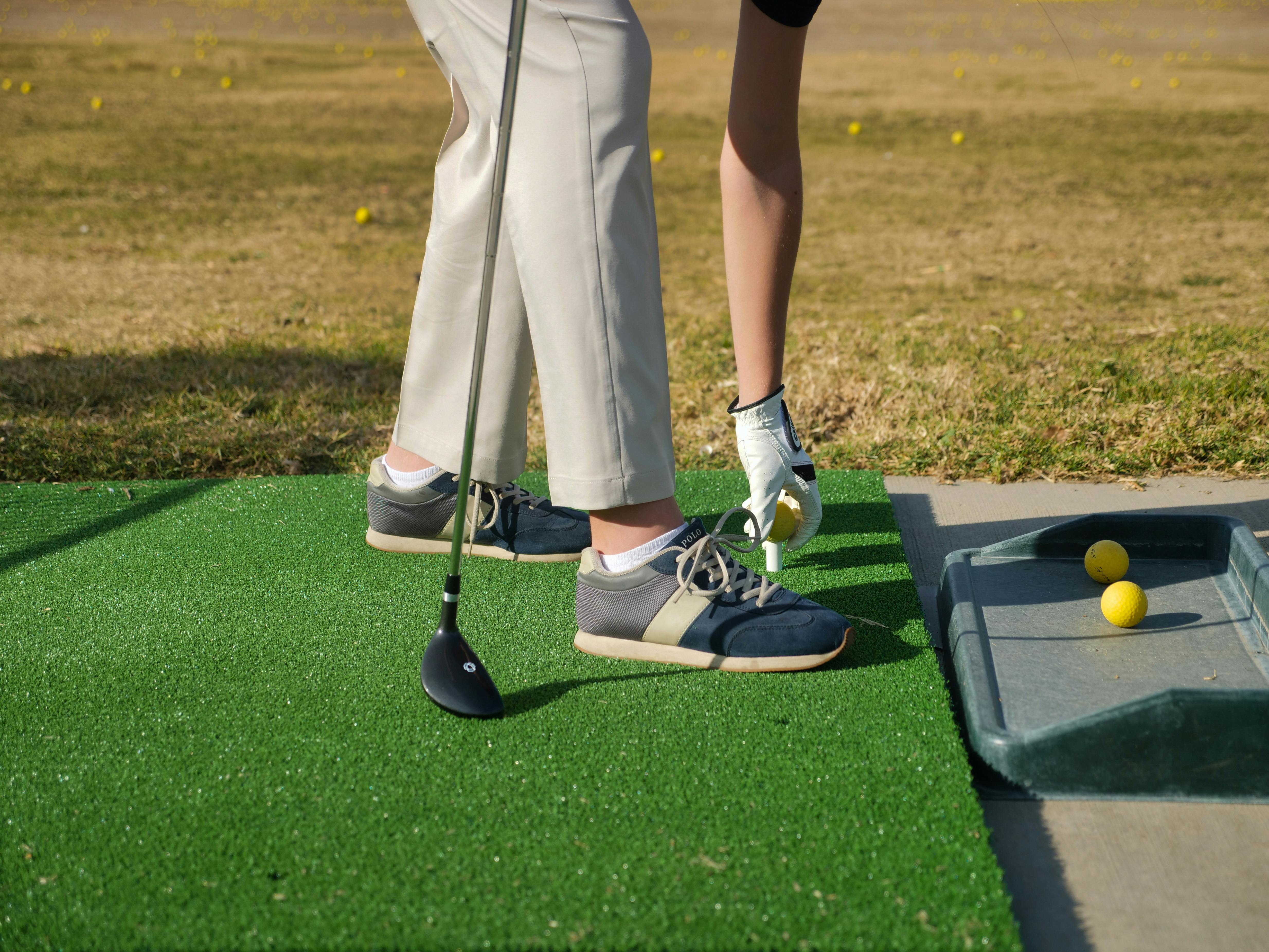Golf balls are an essential piece of gear for any golfer. They come in a variety of sizes, colors, and styles, and the cost of each type of golf ball can vary significantly. So, just how much are golf balls worth? This guide will provide an overview of the various types of golf balls available on the market today and their estimated costs. Additionally, we’ll discuss what factors can influence the price of a golf ball and other tips for purchasing golf balls.The value of golf balls can vary greatly depending on the brand, type, and condition. Generally, a single, new golf ball can cost anywhere between $1 and $5. A pack of golf balls will cost more per ball but usually range from $10 to $50 depending on the brand and number of balls in the pack. Used golf balls are typically much cheaper and can cost as little as 10 cents per ball.
Key Factors Affecting Golf Ball Prices
The cost of golf balls can vary widely depending on the features and materials used to make them. Some of the key factors that influence golf ball prices include the type of construction, material, performance, and branding. Understanding these factors can help you make an informed decision when selecting the right golf ball for your game.
Construction: The construction of a golf ball can have a significant impact on its price. Multi-piece golf balls are usually more expensive than two-piece balls due to their higher level of complexity and precision in manufacturing. These balls typically provide more control and spin, but they tend to be more expensive.
Material: The materials used in golf ball construction can also have an effect on price. Balls made from higher-grade materials such as urethane tend to be more expensive than those made with cheaper materials like plastic or rubber. Urethane is generally more durable than other materials and provides better feel and control around the green.
Performance: The performance level of a golf ball will also affect its cost. Performance balls are designed for players who want maximum distance and spin off the tee while maintaining good feel around the greens. These types of balls are usually more expensive due to their higher quality components.
Branding: Lastly, branding can have an impact on golf ball prices as well. Balls with famous brand names such as Titleist or Callaway tend to be more expensive than generic brands due to their perceived quality among consumers. Higher end brands may also offer extra features such as chemical coatings that enhance spin or aerodynamics which add to their cost.
In conclusion, there are several key factors that influence golf ball prices including construction, material, performance, and branding. Knowing these factors can help you select the best golf ball for your game at a price that fits your budget.
Different Types of Golf Balls and Their Prices
Golf balls are an essential part of any golfer’s game. There are many different types of golf balls available on the market, each with their own unique features and benefits. Whether you’re a beginner or a pro, it’s important to know which type of ball is best for your game. Let’s take a look at some of the most popular types of golf balls and their prices.
The first type is the two-piece ball. These balls are made from a durable rubber core surrounded by a hard plastic cover. They provide great distance and spin control, making them ideal for beginners. Two-piece golf balls are typically the least expensive and can range in price from $10-$30 per dozen.
The next type is the three-piece ball. These balls feature two layers of solid rubber core surrounded by a softer cover that provides more spin on shots around the green. Three-piece golf balls usually cost between $20-$50 per dozen, depending on the brand and quality.
Finally, there are four-piece golf balls which provide maximum distance and spin control due to their multiple layers of construction. These premium quality balls usually cost upwards of $50 per dozen but can range in price up to $100 or more depending on the brand and features offered.
No matter what kind of golfer you are, there is a golf ball out there that will help improve your game and fit within your budget. Knowing what type best suits your needs will help you make an informed decision when it comes to choosing which golf ball to buy for your next round!
Impact of Brand on Prices of Golf Balls
The prices of golf balls vary depending on the brand. Different brands offer different qualities and performance levels, and this has a direct impact on the prices of golf balls. High-end brands like Titleist, Callaway, Bridgestone, and TaylorMade offer high-performance balls that are more expensive than mid-range or entry-level brands. These premium balls feature advanced materials and technologies to deliver superior distance, accuracy, and spin control.
In addition to brand reputation, the composition of the ball also impacts its price. Golf balls made with premium materials such as urethane coverings are usually more expensive than those made with lower-grade materials such as plastic or rubber covers. Urethane covers provide better spin control, durability, and feel than other materials and cost more to produce.
The number of golf balls in a pack also affects price. Packs containing fewer balls tend to be more expensive per ball than those containing more balls. For example, a pack of three Titleist Pro V1 golf balls may cost more than a pack of twelve Bridgestone e6 golf balls.
Overall, the brand and quality of a golf ball have a direct impact on its price. Premium brands offer high-performance features that increase their cost compared to mid-range or entry-level options. The composition of the ball can also affect its price, as can the number of balls included in a pack.
Price Comparison of Used vs. New Golf Balls
When shopping for golf balls, a golfer is often faced with the decision of whether to go with new or used golf balls. The price difference between used and new golf balls can be significant, so it’s important to understand the differences between the two types before making a purchase. New golf balls are typically much more expensive than used golf balls, as they have never been played with and are in pristine condition. Used golf balls, on the other hand, can be significantly cheaper than new ones as they have already been played with and may show some signs of wear and tear.
The cost savings between buying used versus new golf balls can be considerable. For example, a dozen top-of-the-line Titleist ProV1x golf balls can cost upwards of $60 when purchased new. On the other hand, used Titleist ProV1x golf balls can be found for around half that price or even less when purchased in bulk quantities. Similarly, a dozen Callaway Chrome Soft X Golf Balls will cost around $50 when purchased new while used versions can often be found for less than half that price.
It’s important to note that when buying used golf balls there is no guarantee of quality or performance. While some used golf balls may perform just as well as their brand-new counterparts, others may not perform quite as well due to wear and tear from previous use. As such, it’s important to inspect each ball carefully before making a purchase in order to ensure that it will meet your performance expectations.
In terms of price comparison between used and new golf balls, there is no denying that buying used can save you money in the short term. However, if you’re looking for maximum performance out of your golf ball then it may be worth investing in new ones instead. Ultimately, it’s up to each golfer to decide which option works best for them and their budget.

Average Cost of Quality Golf Balls
Finding the right golf ball can be a daunting task, as there are so many options out there. But when it comes to quality golf balls, you know that you’re going to be getting a product that will last and provide you with consistent performance. The average cost of quality golf balls will depend on the type of ball, the brand, and the number of balls purchased. Generally speaking, quality golf balls will range in price from around $30 for a dozen to over $100 for a dozen premium balls. Higher end balls are typically made with higher-grade materials like urethane covers and multi-layer constructions that offer more spin and control than lower-end models.
The type of ball you choose should depend on your playing style and skill level. If you are a beginner or occasional golfer, then an all-around ball may be best for you. These types of golf balls offer good distance off the tee as well as good feel around the green. More advanced players may opt for Tour-level or even Tour-X golf balls which are designed for maximum control and spin around the green.
When it comes to brands, there is no shortage of options out there. Some of the most popular brands include Titleist, Callaway, TaylorMade, Bridgestone, Srixon and more. Prices will vary depending on brand but typically range from $25-$50 per dozen for quality golf balls from these manufacturers.
Finally, the number of golf balls purchased can make a big difference in cost as well. If you only need one or two dozen then buying in bulk can save money over buying individual packs or sleeves. Of course if you go this route then it’s important to make sure that you have enough room to store all your new golf balls!
Overall, the average cost of quality golf balls can vary greatly depending on the type of ball chosen, brand selected and quantity purchased. Purchasing in bulk can help save money but always make sure that you have enough storage space before doing so!
Introduction
Golf is a sport that requires skill, focus, and the right equipment. When it comes to selecting golf balls, you need to make sure you choose the right ones that are suited to your style of play and budget. Not all golf balls are created equal, and some will provide more value for your money than others. That’s why we’ve created this buyer’s guide to help you find the best value for money golf balls on the market. Read on to learn more about what features you should be looking for and which golf balls offer the best performance at a reasonable price.
Types of Golf Balls
When choosing a golf ball, there are several different types to choose from. The most popular types are two-piece golf balls, three-piece golf balls, four-piece golf balls, and multi-layer golf balls. Two-piece golf balls offer a good balance between distance off the tee and spin around the greens. Three-piece and four-piece golf balls typically provide more spin control around the green as well as increased distance off the tee. Multi-layer golf balls feature multiple layers that work together for increased spin control, distance off the tee, and forgiveness on off center hits.
Construction Materials
The construction materials of a golf ball also play an important role in how it performs on the course. The core of most modern day golf balls is made up of either Surlyn or balata materials. Surlyn is typically used in two-piece and three-piece construction while balata is primarily used in four-piece construction because it offers better spin control around the green. The cover material can also have an effect on performance; urethane covers offer better spin control while ionomer covers tend to be more durable.
Compression Rating
The compression rating of a golf ball is another important factor when it comes to choosing one that will provide good value for money. A higher compression rating means that the ball will compress more upon impact with your clubface resulting in increased distance off the tee but less spin around the green (vice versa for lower compression ratings). Most amateur players should look for a compression rating somewhere between 70 – 90 depending on their swing speed.
Price Points
When it comes to finding good value for money when buying a new set of golf balls, there are several price points to consider. Entry level models tend to be priced around $15 per dozen while mid range models can cost anywhere between $20 – $40 per dozen depending on brand and features offered. High end models can cost upwards of $50 per dozen but typically offer superior performance along with additional features such as improved durability or softer feel.
Conclusion
Choosing a set of new golf balls doesn’t have to be expensive or difficult; with this buyer’s guide you now have all of the information needed to make an informed decision when selecting your next set of golfing equipment! Be sure to consider all aspects such as construction materials, type, compression rating, price point, and brand before making your purchase so that you can get maximum performance without breaking your budget!
Price
When shopping for affordable golf balls, price is undoubtedly the most important factor. You want to make sure you are getting a good deal and not overspending on your purchase. It is also important to consider the quality of the balls you are buying and not just focus on the price. You should also try to compare prices between different retailers and online stores, as they may offer different prices for the same product.
Durability
Durability is another key factor when shopping for affordable golf balls. You want to make sure that you are getting a ball that will last, even after multiple hits off the tee. Some cheaper golf balls may be made of a soft material that can easily become damaged or degrade quickly with use. Checking reviews from other consumers can help you get an idea of how durable a particular ball is before you buy it.
Feel
The feel of a golf ball is an important factor to consider when shopping for affordable options. Different materials used in manufacturing can affect how a ball feels when it hits your club, so it’s important to test out different types if possible before making a purchase. Different materials may also affect the spin and trajectory of your shots, so it’s worth taking some time to experiment with different types of balls in order to find one that suits your game best.
Brand
Finally, it’s worth looking into which brands offer affordable golf balls and what kind of reputation they have among consumers. While some brands may offer cheaper prices, their products might not be as durable or perform as well as more expensive options from other brands. Reading reviews online can help you decide which brands offer good quality at an affordable price point.

Conclusion
Golf balls are a very important part of the game of golf, and they can be worth quite a bit of money. The value of a golf ball depends on its condition, the type of ball, and where it was purchased. Generally, high quality balls are more expensive than lower quality balls, and they will last longer. Used golf balls may be cheaper, but they may not perform as well or last as long. Ultimately, it is up to the individual golfer to decide how much they are willing to spend on golf balls.
Golfers should take into consideration their skill level and playing style when choosing the right ball for them. A ball that is too hard may not provide enough spin for a beginner golfer while a soft ball may be too light for an advanced player. Knowing what kind of ball works best for your game will help you decide how much you should be spending on golf balls.
In conclusion, the value of a golf ball varies greatly depending on its condition, type, and where it was purchased from. It is up to each individual golfer to decide how much they are willing to spend on golf balls in order to get the most out of their game.




